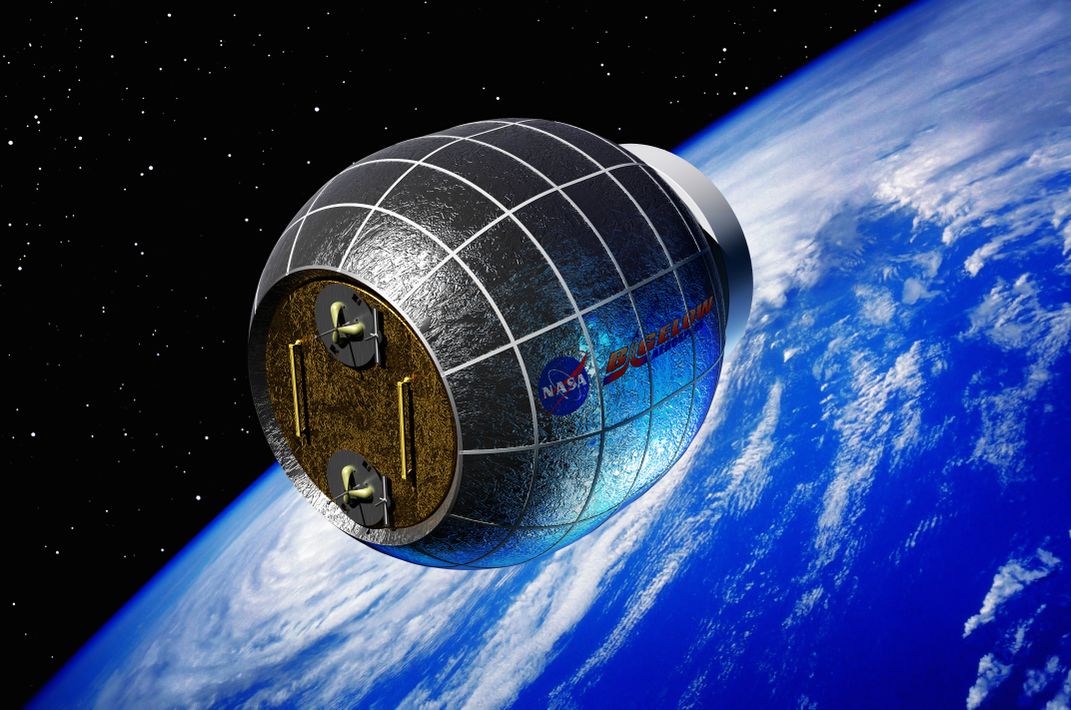Extreme Makeover: ISS Edition
How to give the International Space Station a little bit more room
/https://tf-cmsv2-smithsonianmag-media.s3.amazonaws.com/filer/58/a8/58a8ba94-d9bc-4bdc-b2b6-b297434f56b8/may2015_d02_fastforward.jpg)
Like the rest of us, astronauts could always use a little more breathing room—the trouble is lugging it into space. Now NASA thinks it has found a solution, in the form of a shiny new addition to the International Space Station: an inflatable den.
The Bigelow Expandable Activity Module (BEAM) is a tentlike structure that fits inside a rocket nose cone, then expands to 565 cubic feet, about the size of a minivan. After it berths with the space station, the BEAM will fill with pressurized breathable air, pushing the envelope out to form a rigid outer layer of a shock-absorbing, Kevlar-like weave. The habitat will debut in space later this year on the CRS-8 mission, under NASA’s contract with Elon Musk’s SpaceX company, and an astronaut will set foot inside an inflatable habitat for the very first time.

The manufacturer, Bigelow Aerospace, is already working on roomier lodgings, about 12,000 cubic feet, for long-term missions. These expandables will accommodate crews of up to six people, with space for research, storage, sleeping and living quarters.
Mike Gold, Bigelow’s director of D.C. operations, believes that these systems could replace ISS after the program ends in 2024. Expandable modules could be docked together to form a “space complex” supporting future missions to the moon, Mars and beyond. Because the architecture of the structures is flexible, he says, “you don’t have to keep reinventing the wheel.”
Related Reads

You Are Here: Around the World in 92 Minutes